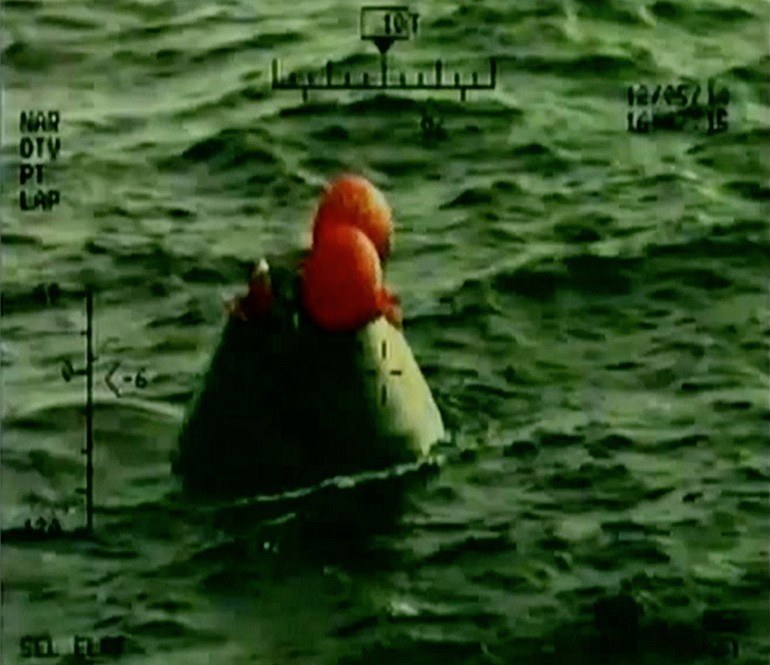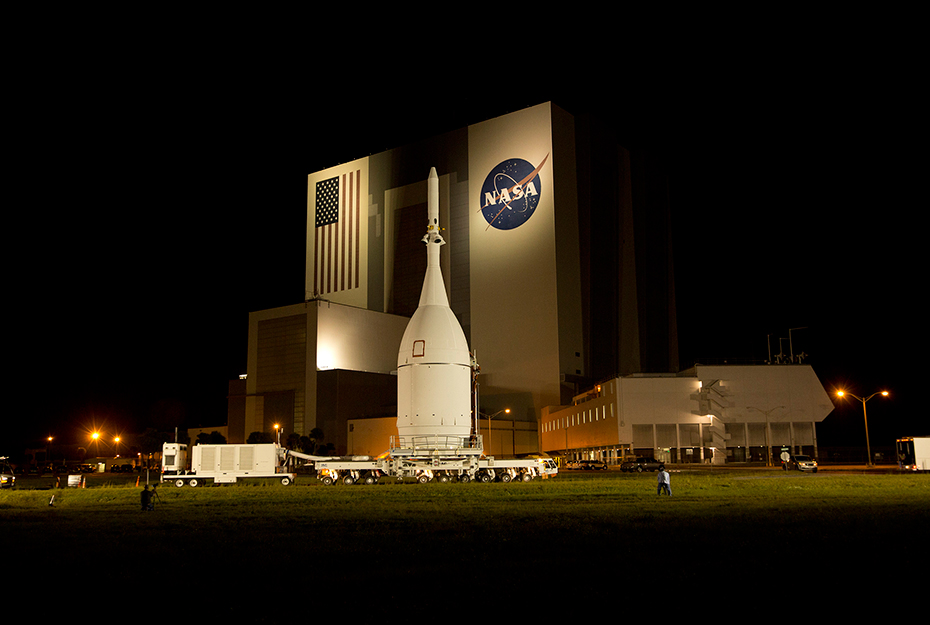December 5, 2014 – Orion flew into space for the first time today, albeit with the no humans on board. It circled the Earth twice reaching 5,800 kilometers (3,604 miles) above the planet before descending back into the atmosphere at a speed of 32,200 kilometers (20,000 miles) per hour. The capsule endured temperatures of 2,200 Celsius (4,000 Fahrenheit) degrees on re-entry, twice the level of heat experienced by Space Shuttle missions.
The purpose of the flight was to test Orion’s on board systems, check out the tolerances of the capsules construction, and make sure all external components worked as planned. With 1,200 sensors on board Orion past the check up with flying colors. And all the external components – the launch-abort system, heat shield, and parachutes, all appeared “nominal,” NASA parlance for “worked as planned.”
If an astronaut had tried to stow away, the flight would have been more than unpleasant because in this test there were no seats and no life support. On board, however, was a James Kirk doll courtesy of Bill Shatner.
Lockheed Martin is the builder of Orion. Subject to congressional funding the company intends to build a fleet of them. A second will fly, once again unmanned, in 2017. And in 2021 Orion will fly with a human crew on a voyage around the Moon. After that NASA has stated their intention to launch at least one Orion mission a year with the space agency hoping to use the spaceship as its workhorse into the 2030s when a mission to Mars is planned.
Some basic Orion specs:
- Can transport up to 4 humans as far as 400 million kilometers (250 million miles) into Deep Space.
- Radiation hardened for hardware, software and human crews.
- High levels of redundancy on essential systems.
- Closed-loop environmental control and life support systems.
- 5 meters (16.5 feet) in diameter.
- Total habitable space from 8.9 to 11 cubic meters (314 to 388 cubic feet) or about 2 minivans in size with a crew of four on board.
So what does this mean for the commercial space companies contracted to NASA to deliver their own space capsules? In today’s NASA telecast a short clip played describing Boeing and SpaceX as the builders of space ferries to transport crews from Earth to and from the International Space Station, freeing NASA to do the Deep Space stuff.
I don’t know about Boeing, but Elon Musk of SpaceX has a very different idea for his so called “NASA ferry.” Musk talks about getting to Mars much sooner than the 2030s and is building alliances with organizations, commercial space ventures and other space-faring nations to achieve this.
But today felt like deja vu as I watched the launch, flight and recovery of Orion. As the cone-shaped capsule descended under its main parachutes to a splashdown in the Pacific (see NASA image below) it brought back my memories of Apollo and I could hear my 1960s Beach Boys albums playing in the background..













